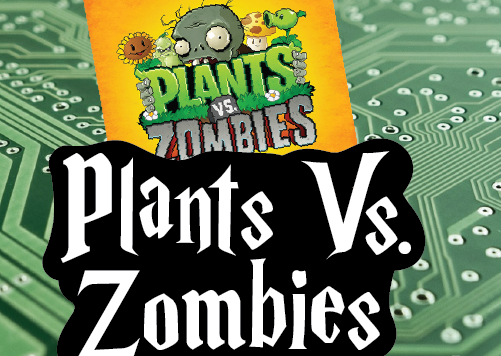Grade:
Transfiguring Adoption awarded this game 4 Hoots out of 5 based on how useful it will be for a foster/adoptive family. [Learn more about our Hoot grading system here]
Click on the image above. Click the pencil/edit icon that appears. Click the “replace” button. Do a search for “hoot.” Choose the right value of hoot from the images found. Choose to have the image size scaled to “medium.” Click the “replace,” button.
Game Info:
- Rating: ESRB Rating: E for Everyone – Mild Fantasy Violence.
- Genre: Adventure, RPG
- Platform(s): Nintendo Switch
- Studio: Nintendo
From the Cover Synopsis of Pokémon Legends: Arceus (2022) by Nintendo:
“Action meets RPG as the new Pokémon series reaches a new frontier. Get ready for a new kind of grand, Pokémon adventure in Pokémon™ Legends: Arceus, a new game from Game Freak that blends action and exploration with the RPG roots of the Pokémon series. Explore the Hisui region—the Sinnoh of old. Your adventure takes place in the expansive natural majesty of the Hisui region, where you embark on survey missions from your main base in Jubilife Village. Mount Coronet rises from the center, surrounded on all sides by areas with distinct environments. Build the region’s first Pokédex. You are tasked with studying Pokémon to complete the region’s first Pokédex. To do this, you’ll need to catch wild Pokémon by sneaking up and throwing a well-aimed Poké Ball™. You can also toss the Poké Ball containing your ally Pokémon near a wild Pokémon to seamlessly enter battle. “
Official Game Trailer
Transfiguring Adoption’s Overview:
The target audience appears to be children that are age 9 and up. This is more so due to the amount of reading involved in the game than violence or inappropriate content. It also appears this game would be best for families that enjoy single-player games with fun story-telling and lots of repetitive tasks. While this game is not directly related to foster care or adoption there are some parallels since the character is literally picked up from one world and moved to another with nothing but the clothing they wear and must adapt to forein surroundings for survival. This outlander that overcomes adversity can be a great example to discuss the hard subjects of adjusting to unexpected transitions, leaning on strengths, and building their identity due to the storyline of this game. Additionally this is a fun game with little online interaction. While there is an online feature that allows players to collect fallen characters’ packs and items there is no in-game communication between players that could potentially foster opportunities for online predators or cyberbullying.
NO SPOILERS IN THIS SECTION!!!
** Spoilers Could Be Ahead **
How Is This Relevant To Adoption & Foster Care?
The premise of this game is that the main character (who has any name the player choses) is chosen by a deity Pokémon named Arceus to be dropped into a forein land called Hisui. Hisui appears to be the early name for the land of Sinnoh, which is the main area for the Pokémon: Diamond, Pokémon: Pearl, and Pokémon: Platinum games. This indicates this game is a prequel to those games. The player is transitioned with nothing but the clothes they wear, which stick out like a sore thumb to the curious but anxious members of Team Galaxy that find them. Over the course of the game the player becomes a sort of expert on Pokémon that helps unite the various groups that live in Hisui as well as the relationships between humans and Pokémon. While this doesn’t reflect foster care or adoption explicitly these outlander themes certainly sound familiar to a child that had endured traumatic separation from family of origin and especially if they were removed from the community they grew up within. For this reason caregivers can discuss many topics over this game including adjusting to unexpected transitions, leaning on strengths, and building their identity due to the storyline of this game
Discussion Points:
- Adjusting To Unexpected Transitions
Children from foster or adoptive backgrounds often have a history of quick, unexpected transitions to different homes or facilities before either reuniting with their biological family or becoming adopted. For this reason a child may show signs of emotional regression as a result of the trauma experienced from each move. It is often safe to assume that your child is “stuck” at the emotional age of when the trauma started until the trauma is transformed through safe relationships and therapeutic relationships and may make emotional/cognitive growth even more challenging. However, a trauma-informed caregiver should know that this is the norm and not close to being the exception and be prepared to give their child extra support while working through their emotions concerning the trauma of removal and transition even years after they occurred. This is due to a child coming into growth spaces where they better understand their earlier circumstances and gaining the vocabulary to discuss and make sense of their experiences and the corresponding emotions that understandably come with such trauma.
- Strength-Based Decision Making
When youth are growing and developing they often have opportunities through trial-and-error (with the help of safe adults) how to learn to make solid decisions with consideration to their own strengths and weaknesses. This can be through peer-to-peer interactions as well as interactions with caring adults that walk them through such decisions as practice. However, youth that have endured significant traumas can find these life skills to be compromised. Caregivers will need to be very intentional with helping a child with trauma hone these skills to catch up to their peers and enable them to grow into successful young adults. Due to past failures a child may feel intimidated by the growth needed but helping a youth identify their strengths and build on these strengths is a valuable lesson that can help your child in making friends, reaching goals, and even in building a strategy for playing the game. - Building Identity
Throughout the game the character goes from a outlander with no connections to Hisui to becoming a well-respected member of the community. While we would wish that our children would have the natural resilience to flourish anywhere planted… trauma can often impact a child’s ability to adjust and form relationship with others. While playing through this game caregivers can process with their children what identity they hope to form as they integrate with their new community and forge their own destiny.
Cautionary Points:
- Mild Fantasy Violence
This game features low levels of trigger potential. There is some fantasy violence due to the nature of the game including Pokémon battles, in which the creatures battle one another in return-based style upon entering battle sequences. However this is not graphic and there is no point when a Pokémon or player dies on screen. Pokémon in battle usually faint and recover quickly with a trip to a research camp or the village to rest. There is an element of trying to prevent the end of the world due to story-related conflict however, again, this is not graphic in nature and is resolved quickly. This game is also unique in that outside of battle sequences a Pokémon could potentially harm a player but the worst case scenario is that the player faints in the field and wakes up home missing some items.
Discussion Guide:
- What is your favorite Pokémon in this game?
Caregiver Note: This is a good introductory question to help ease your child into conversation. Children often struggle with being put on the spot with big questions so it’s good to start the conversation off naturally by giving them a chance to connect with a character they like. - When the main character woke up in Hisui how do you think they felt?
Caregiver Note: The main character (Rei or Akari if you stick with game cannon) falls asleep in their own bedroom and wakes up from a strange dream to find themselves in a place totally unfamiliar with no familiar faces, smells, or views. While some may say this exciting venture would be a welcomed change of pace… the reality is most people would find themselves scared to death. The idea of daily facing the unknown is the daily reality of kids that have experienced the child welfare system and youth may find parallels to their own experiences for this reason. - What seemed to help your character adjust to living in Hisui and joining Team Galaxy?
Caregiver Note: While some pieces such as resilience are certainly key to the character’s success it would be unfair to ignore the influence of kind strangers that help the main character along their journey. Especially at the beginning! While some characters to appear suspicious from the start there are characters such as professor Laventon, your rival (Akari or Rei depending on your player choice in game), Commander Kamado, and other characters jump to the protagonists aid by providing information, advice, a place to live, and a role in the community among other things. While we may take for granted that strangers would jump to help a child in need the reality is at times other people (especially adults) may have been the cause of much pain and loss so it will not be as easy for traumatized youth to identify safe relationships and utilize supports like the main character. Knowing this can help caregivers be more intentional in talking though decisions in ways that help fill in the gaps for your child as they navigate the strange world they have entered. - How would you adjust to living in Hisui? What would help you learn to live there?
Caregiver Note: While this question remains in hypothetical scenarios featuring fantasy elements there are still skills you can discuss with your child that will help build resilience and life skills across both realms. Help your child think through different ways to find help, identify safe relationships, and other pieces they may discover through talking to you. Later on, as opportunities arise you will better be able to point to real life examples after identifying some fantasy solutions in game. - When you go on a mission which ones are best to start with? Easy or hard?
Caregiver Note: Throughout the game the player has several different tasks they need to complete by the end of the game. Some will appear towards the beginning and may be achievable with basic tools while others may not be achievable for several levels. This can be due to having chance encounters or having the right tools gained through experience. While this may seem like a simple correlation, this ability to look at the tools and strengths you have and to apply that to decision making is actually a piece of cognitive development built through social learning. This means humans are not innately wired to make these decisions in this manner. For this reason caregivers may need to provide concrete examples of making strength-based decisions and creating a task list to help youth apply them to real-life situations… especially in situations where tasks are less hands on and more mental. - When you get a new star you are also getting a new recipe for tools. How can getting more starts help you with some of these harder tasks?
Caregiver Note: Again, it is easy to take for granted how getting a star (experience level) means gaining new tools and making harder tasks easier. But this linear thinking takes time and practice. It may not seem like it, but as your youth practices this way of thinking over and over they are actually activating the pre-frontal cortex and developing in areas like language and problem-solving when they play such games and are also receiving the benefit of talking through these mental tasks. Giving language to behavior is giving your child a voice to learn how to better ask for help, needs, or even advice. - When you are figuring out how to plan for tasks do things like the check-off list in the PokéDex help you? Or are there better ways to help you figure out how to start some of these really long tasks?
Caregiver Note: Maybe you and your youth can discuss help for specific situations at this point but really this question is a huge benefit for caregivers! This will give you insight on new ways to help your child succeed with other tasks like chores, how to complete homework, or other areas in which your youth is still learning to prioritize tasks and make strength-based decisions. Some youth do well with written lists, others with pictures, and some with a competitive edge. There are many different ways to try and creative collaboration between you and your youth is always a win. - When the game starts the main character seems pretty plain. What are some ways the character develops their unique identity?
Caregiver Note: During game play it is revealed that activity with Pokémon is pretty limited and this vastly differs from past games where the Pokémon and humans live side-by-side. As the game continues the main character is unique in their ability to work alongside their Pokémon as partners. The character also surfaces as a unique person in their ability to work with both local tribes. While your youth may consider things like battle style, how they catch Pokémon, or how the character is dressed caregivers can address interpersonal characteristics and other components that may not be as obvious to a child. - It seems like no one else but the main character can bridge the gap between Pokémon and humans, the tribes, or even Arceus and the rest of the world. What are some special things that you are great at or known for?
Caregiver Note: For many kids that have dealt with the child welfare system or transitioning into a new family they may struggle with how to label themselves. After many moves, lack of exposure to culture of origin, and missing out on social experiences to help gain an identity many youth may feel lost in the shuffle in the new world around them. Youth will benefit from a caregiver that will look past the labels such as “foster child” or “special needs” and help the youth identify other pieces of their identity. Maybe in the past a youth was labeled as “loud” or “oppositional”. Reframing this and channeling some of these experiences can build on these labels instead as “strong advocate” or “enduring”. While some of these may be more complex pieces of identity for your child feel free to build on strengths in your child’s identity you have noticed or your youth may be aware of to help them see themselves as the amazing, unique person they already are.
10. What do you want to be known for one day? What legacy do you want to leave behind, like the characters in the game leave for the Pearl and Diamond games?
Caregiver Note: Allow your child to process this to their comfort level. For some kids they may only focus on what’s happening next month while older youth may be more able to think to a farther future. With these discussions you and your child can work together as a team to help foster an environment conducive to developing the identity and legacy for the future.
About the Reviewer
RACHAEL RATHE
Rachael B. Rathe is an East Tennessee native with a Bachelor of Arts Degree in Psychology with a Minor in Child & Family Studies from The University of Tennessee Knoxville. She has worked in mental health since 2013 and in foster care/adoptions for a private provider agency since 2014. Rachael was inspired to work in the field after working with children and teens on a volunteer basis 2008 – 2013. Rachael’s ideal self-care day involves snuggling on a couch with her kitties (Fergus and Rufus) while enjoying a good movie or book. She also enjoys galavanting around conventions concerning all things nerd and geekery.


